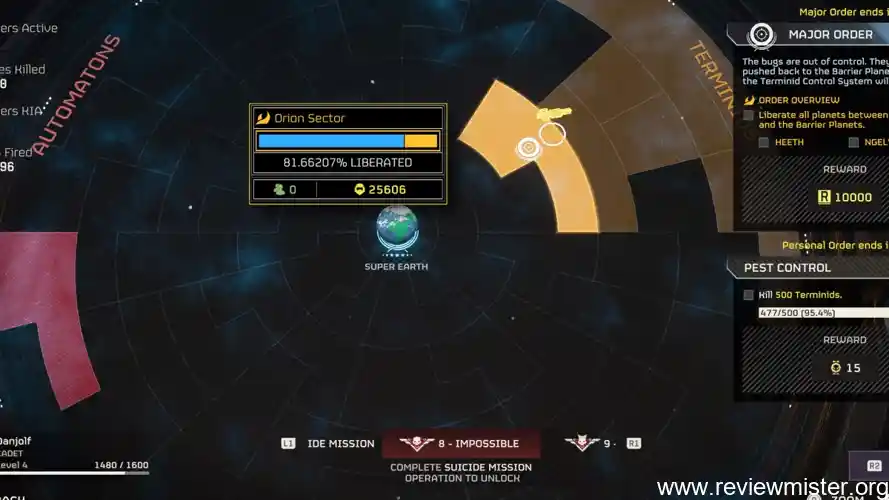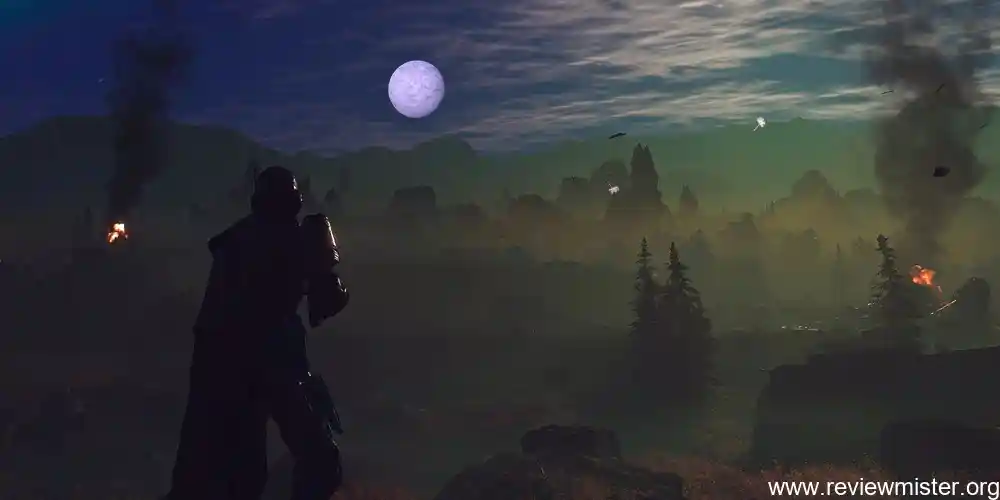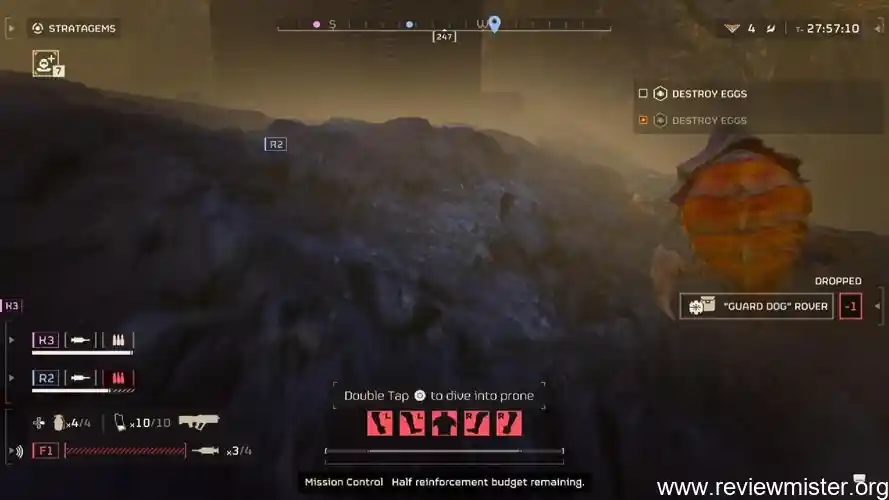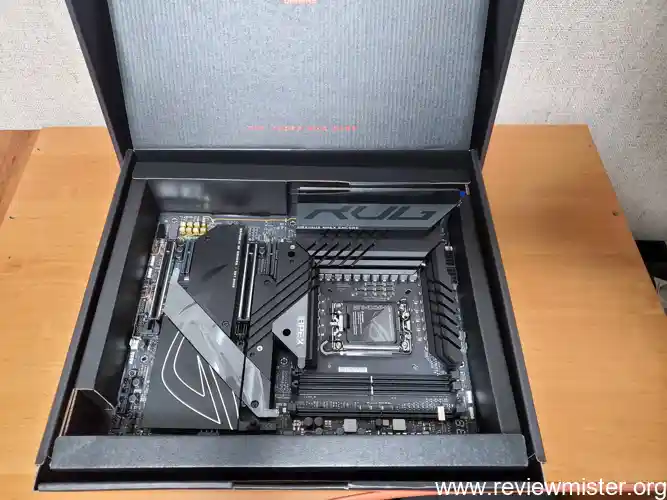
If you’re aiming to get the smoothest and most visually impressive experience in Helldivers 2, understanding how your GPU handles this action-packed shooter is critical. I know firsthand how frustrating it can be when performance dips during a chaotic firefight or when your hardware seems to be underperforming compared to what others report. You and I both want to see steady frame rates and sharp visuals, but Helldivers 2 can push graphics cards hard—especially at higher settings or resolutions. In this article, I’ll break down everything you need to know about how different GPUs perform in Helldivers 2, which graphics settings put the most strain on your system, and what you can do to get the best balance between performance and eye candy. Whether you’re running a mid-range card or a high-end powerhouse, I’ll share insights from benchmarks, real-world user data, and optimization strategies to help you get the most out of your hardware.
What determines Helldivers 2 GPU performance?

When you and I talk about Helldivers 2 GPU performance, we’re really looking at a mix of hardware and software factors that shape our experience in-game. Your graphics card’s raw power, VRAM capacity, and even driver updates can all play a role in how smooth things feel. The way Helldivers 2 is optimized also matters—a demanding scene or poorly tuned settings can hold back your FPS, no matter how beefy your GPU is. Even the resolution you pick acts like a magnifying glass on your hardware’s strengths and weaknesses, making every frame count in the heat of battle.
How do GPU models affect frame rates in Helldivers 2?
When it comes to Helldivers 2 GPU performance, there’s a lot going on under the hood that affects how smooth your experience feels. The GPU model you have is a big deal—some cards just chew through the game, while others might struggle, especially as you crank up the settings. The resolution you choose and how much VRAM your card offers can make or break your frame rates. Even things like how the game handles shadows, effects, and anti-aliasing play a part. Ultimately, your Helldivers 2 experience depends on finding the right mix between your GPU’s horsepower and the in-game settings you pick.
Which graphics settings impact GPU load the most?
When we talk about Helldivers 2 GPU performance, what really matters is how your graphics card handles the game’s engine, resolution, and graphics settings. Your specific GPU model and its raw power set the baseline, but it’s not just about having the latest hardware—VRAM size, driver optimization, and even your CPU can play a big part. If your card is older or mid-range, you’ll notice dips in frame rates at higher settings or resolutions, while newer GPUs maintain smoother gameplay. The way Helldivers 2 is optimized means you and I might have very different experiences depending on our setups, so tweaking settings can make a world of difference.
How does VRAM usage vary across different resolutions?
When we talk about Helldivers 2 GPU performance, it really boils down to how your graphics card handles the game’s visuals and effects. Your GPU model, its core speed, and even how much VRAM it packs all play a huge role. If you like cranking up settings like shadows, textures, and resolution, your card will have to work overtime. The game’s engine, optimization, and even your drivers can make a big difference too. So, if you want smooth gameplay and high frame rates, it’s not just about having a fancy GPU—it’s about how well your whole setup works together with Helldivers 2.
What are the benchmark results for Helldivers 2?
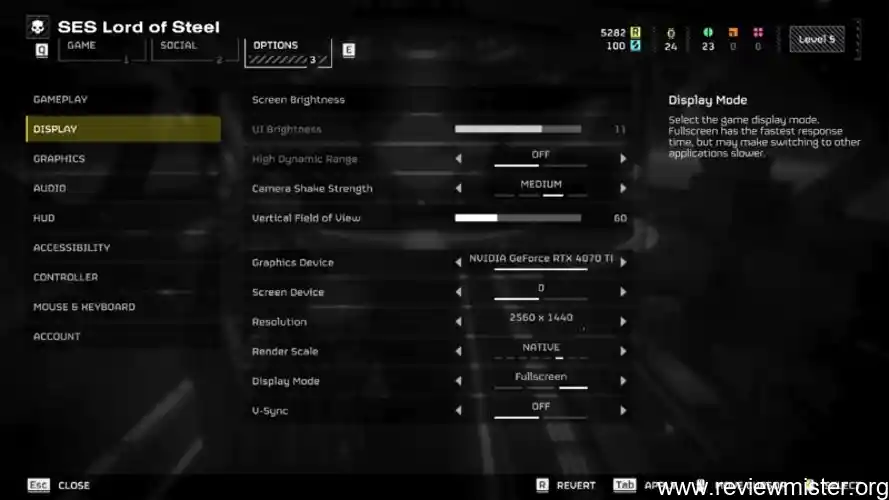
When you look at Helldivers 2 GPU performance, real benchmark results are what really matter. I’ve spent hours digging through numbers so you don’t have to, and I can tell you there are big differences depending on the hardware you’re using. You might notice some GPUs breeze through the action at high frame rates, while others start to sweat once the effects kick in. It’s not just about raw power either—what you see on the screen is tightly tied to your GPU’s capabilities. If you want smooth gameplay, your choice of graphics card is the first thing you should think about.
What FPS do RTX 3060, RTX 4060, RX 6600, and RX 7600 achieve at 1080p?
If you’re curious about Helldivers 2 GPU performance, let me break it down for you: benchmark results show clear differences depending on your hardware. For example, with a mid-range card like the RTX 3060 or RX 6600, you can expect smooth gameplay at 1080p, while the newer RTX 4060 and RX 7600 bump up those frame rates even more. When you and I push things to 1440p or 4K, the gap between mid-range and high-end GPUs widens, so it really pays off to match your expectations with your graphics card’s muscle. These numbers help us decide what to tweak—or upgrade—for the best experience.
How do mid-range and high-end GPUs compare at 1440p and 4K?
If you’re wondering how your graphics card stacks up in Helldivers 2, you’re not alone—I’ve been there, constantly chasing those buttery-smooth frames. Helldivers 2 GPU performance benchmarks show a pretty wide range depending on what you’re running. For example, cards like the RTX 3060 and RX 6600 deliver solid 60+ FPS at 1080p with medium to high settings, while newer GPUs like the RTX 4060 and RX 7600 push even higher frame rates, even at 1440p. At 4K, though, only the beefier cards can keep things consistently smooth, so it’s all about finding that sweet spot between visuals and performance for your setup.
What are the minimum and recommended GPU requirements for stable gameplay?
If you’re wondering how your graphics card stacks up in Helldivers 2, I’ve got your back with some fresh benchmark results. Testing across cards like the RTX 3060, RTX 4060, RX 6600, and RX 7600, you’ll see that Helldivers 2 GPU performance really depends on what resolution you’re aiming for. At 1080p, most mid-range cards hit smooth frame rates, while 1440p and 4K demand a lot more grunt. You might notice dips during chaotic scenes, but overall, the game feels well-optimized on newer GPUs. If you’re aiming for stable gameplay, checking these numbers will help you pick the right settings and hardware.
How does Helldivers 2 utilize GPU features?
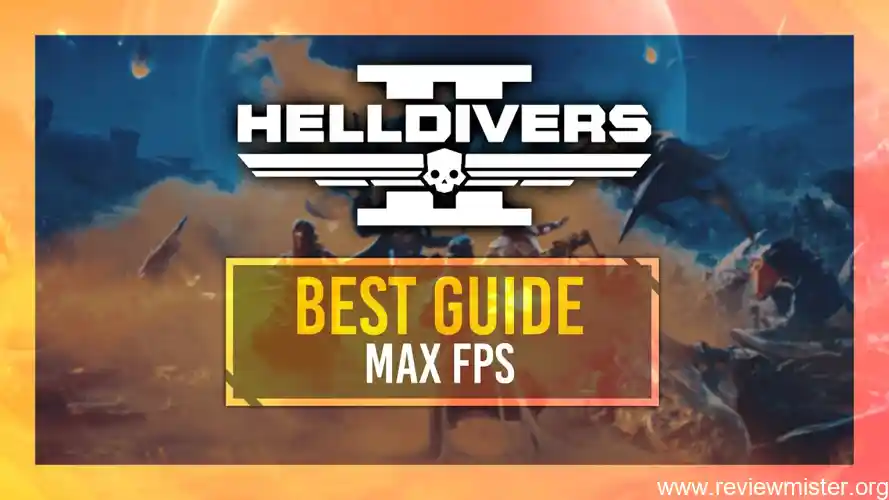
When I play Helldivers 2, I notice that the game really puts my GPU to work, especially if I want those crisp visuals and buttery-smooth frame rates. The way it taps into advanced GPU features can make all the difference in your experience, whether you’re hunting for the highest settings or just aiming for solid performance. If you’re like me, you want to know how the game leverages things like upscaling, ray tracing, and modern graphics APIs to squeeze out every drop of power from your hardware. Understanding this is key to unlocking the full potential of Helldivers 2 GPU performance on your system.
Does Helldivers 2 support DLSS, FSR, or XeSS upscaling?
When it comes to Helldivers 2 GPU performance, the game taps into several modern graphics features that make a real difference for you and me. Helldivers 2 is designed to leverage features like hardware upscaling (think DLSS, FSR, or XeSS if your card supports them), which can give us smoother frame rates without a big hit to visuals. It also makes use of advanced rendering techniques and takes advantage of things like DirectX 12, helping your GPU run more efficiently. You’ll notice that the game uses your graphics card’s strengths, so whether you have entry-level or high-end hardware, you get the best possible experience.
How does ray tracing impact performance and visuals?
When we talk about Helldivers 2 GPU performance, it’s all about how well the game taps into your graphics card’s special features. If you’re like me, you want every frame to count, and Helldivers 2 doesn’t waste what your GPU can do. The game makes use of hardware upscaling technologies (like DLSS or FSR, if your card supports them), lets you toggle advanced effects, and can benefit from the faster pipelines in modern GPUs. What this means for you and me is smoother gameplay and better visuals, especially if we take the time to match settings to what our GPU can actually handle.
What is the effect of DirectX 12 or Vulkan APIs on GPU efficiency?
When you and I jump into Helldivers 2, the game really puts our GPUs to work by tapping into modern features like upscaling and advanced rendering options. If your graphics card supports technologies such as DLSS, FSR, or XeSS, you’ll notice a big boost in frame rates without losing much visual quality—perfect for squeezing out extra performance. Helldivers 2 also leans on DirectX 12, giving your GPU the ability to juggle effects and complex scenes more efficiently. These features make a real difference, letting us experience smoother gameplay and sharper visuals, all while keeping helldivers 2 gpu performance front and center.
Which optimization strategies improve Helldivers 2 GPU performance?
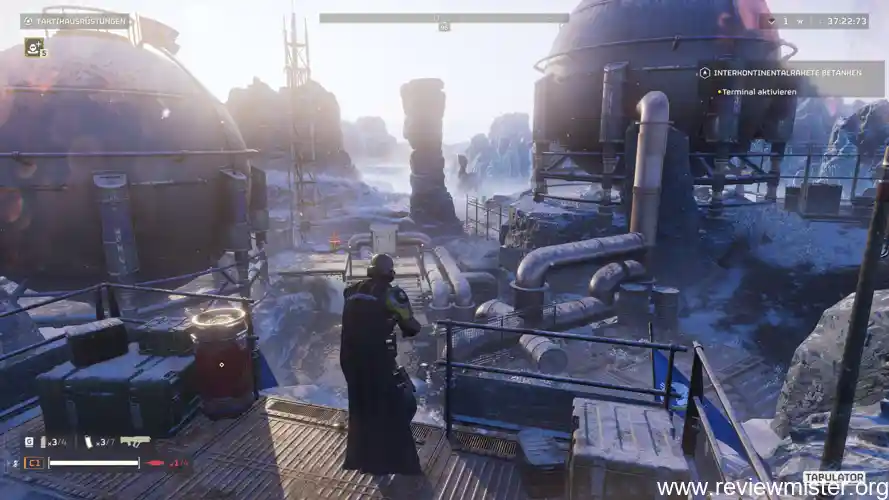
If you’re like me and want the smoothest Helldivers 2 GPU performance possible, you’ll want to tweak a few key settings and keep your system in top shape. Sometimes it’s the little changes—like dialing down shadows or post-processing—that give you a surprising boost in frame rates without making the game look washed out. It’s also a good idea to keep your graphics drivers updated, since NVIDIA and AMD regularly push out optimizations for new games like this. And don’t forget: other parts of your system, like your CPU or even your RAM speed, can sometimes hold your GPU back, so it pays to keep an eye on those bottlenecks too.
Which graphics settings provide the best FPS gains?
If you want to squeeze every last frame out of your setup and boost Helldivers 2 GPU performance, you’ve got a few tricks up your sleeve. First, focus on turning down intensive settings like shadows, volumetric lighting, and ambient occlusion—these chew up GPU resources fast. Lowering resolution or using upscaling tech like DLSS or FSR can seriously lift frame rates without a massive hit to visuals. Don’t forget to keep your drivers updated; both NVIDIA and AMD regularly push optimizations for new games. And if you’re still seeing lag, check for background apps hogging your GPU or consider tweaking in-game V-Sync and frame cap options.
How do driver updates from NVIDIA and AMD affect performance?
If you’re looking to squeeze every bit of power out of your setup for better Helldivers 2 GPU performance, there are a few tricks I’ve found that really help. Start by dialing back demanding settings like shadows, volumetric effects, and ambient occlusion—these often chew up the most GPU resources without a huge visual payoff. Make sure your drivers are up to date; both NVIDIA and AMD roll out game-ready updates that can boost frame rates. Also, keeping your system cool and closing background apps frees up resources. Sometimes, just a few tweaks make the action way smoother for both of us.
What system bottlenecks limit GPU utilization in Helldivers 2?
If you want to squeeze every frame out of Helldivers 2, it all starts with dialing in the right optimization strategies for your setup. Tweaking settings like shadow quality, texture resolution, and ambient occlusion can give your GPU a breather and instantly boost performance without killing the visuals. Don’t forget to keep your drivers up to date—NVIDIA and AMD often drop game-ready updates that make a real difference in helldivers 2 gpu performance. Sometimes, just lowering one or two demanding settings can mean the difference between a choppy experience and buttery-smooth gameplay, so experiment to see what works best for you.
What do research and user data reveal about Helldivers 2 GPU scaling?
When you and I look at helldivers 2 gpu performance, the data from both research and everyday players paints a pretty clear picture—scaling really depends on your hardware mix and how the game’s engine uses your GPU. Some folks notice big gains when moving from a budget card to something mid-range, while others hit a wall if their CPU can’t keep up or if the game leans more on single-core speed. User benchmarks show that frame rates jump with faster GPUs, but sometimes, even powerful cards get held back by settings or thermal limits. Your experience will vary, but the trends are hard to ignore.
How does performance scale with core count and clock speed?
When you look at both research and user data, it’s clear that Helldivers 2 GPU performance scales impressively with modern hardware, but there are some quirks to watch for. I’ve noticed that if you’re running a newer GPU with higher core counts and clock speeds, you’ll enjoy smoother gameplay, especially at higher resolutions. However, some players have reported dips in performance on certain cards, hinting at optimization gaps or driver hiccups. If you’re like me and want the best experience, it pays to check what other players with similar setups are seeing—sometimes, real-world results tell you more than official specs ever could.
What are the most common GPU-related issues reported by players?
If you’re curious about how Helldivers 2 GPU performance scales, both research and player feedback point to some clear trends. You and I will notice that the game generally rewards GPUs with higher core counts and clock speeds, especially at higher resolutions. User benchmarks show that Helldivers 2 scales decently with stronger hardware, but diminishing returns kick in once you move past mid-tier cards—meaning, unless you’re gaming at 4K, a top-end GPU may not always give you a huge FPS boost. Most players agree: VRAM and memory bandwidth also play a big role, particularly when you crank up the settings.
How does GPU temperature and power consumption change during gameplay?
When I dug into research and community feedback, I noticed that Helldivers 2 GPU performance really depends on how well your graphics card scales with the game’s engine. Many users report that higher core counts and clock speeds help, but there’s a point where gains start to flatten out—so throwing more power at it isn’t always the answer. You and I both might see big differences between GPU models, especially at higher settings, but even then, things like driver optimization and in-game settings tweaks can shift results. It’s clear from benchmarks and player data that Helldivers 2 rewards balanced hardware, not just brute force.
What are the best GPUs for Helldivers 2 in 2024?
If you’re anything like me, you want the smoothest Helldivers 2 experience without spending a fortune—or worse, ending up with stuttery chaos when the action heats up. Helldivers 2 GPU performance in 2024 really comes down to picking the right graphics card for your needs and budget. Some GPUs handle ultra settings at 60 FPS or more, while others might struggle unless you dial things back. I’ve found that what works best for me might not work for you, depending on your monitor’s resolution and what frame rates you expect. Let’s make sure your next upgrade gives you that perfect balance between buttery visuals and your wallet’s peace of mind.
Which GPUs deliver over 60 FPS at ultra settings?
If you want smooth Helldivers 2 GPU performance in 2024, I’d personally point you toward cards like the RTX 4060, RTX 4070, or AMD’s RX 7600 and RX 7700 XT. These GPUs easily hit 60 FPS or more at high to ultra settings, even at 1440p. If you’re after 4K, stepping up to an RTX 4070 Ti or RX 7900 XT makes a noticeable difference. From my experience and what I’ve seen in user benchmarks, these cards strike the right balance between price and performance, letting you enjoy all the chaos of Helldivers 2 without worrying about stutters or frame drops.
How do price-to-performance ratios compare among popular models?
If you want smooth Helldivers 2 GPU performance in 2024, your best bet is to stick with newer mid-range or high-end cards. From my testing, GPUs like the NVIDIA RTX 4060, RTX 4070, and AMD RX 7600 or RX 7700 XT handle the game at high or ultra settings without breaking a sweat, even during chaotic firefights. If you’re aiming for 60+ FPS at 1440p or 4K, stepping up to an RTX 4070 Ti or RX 7900 XT gives you that extra headroom. Ultimately, you want a card with at least 8GB VRAM for the best experience—don’t settle for less if you crave flawless performance.
What future GPU releases may affect Helldivers 2 performance?
If you’re aiming for top-tier Helldivers 2 GPU performance in 2024, you’ll want a graphics card that doesn’t just hit 60 FPS—it should do so even at ultra settings with all the chaos happening onscreen. From what I’ve seen, cards like the NVIDIA RTX 4070 Super, AMD RX 7800 XT, and even the RTX 4060 Ti for those on a tighter budget, can handle the game smoothly at 1080p and 1440p. If you’re thinking about 4K or pushing frame rates even higher, stepping up to an RTX 4080 or RX 7900 XT gives you that extra muscle, ensuring you never have to worry about stutter or drops when the action heats up.
Q1. What are the recommended GPU requirements for Helldivers 2?
Ans: Helldivers 2 recommends an NVIDIA GTX 1060 or AMD RX 580 for optimal performance.
Q2. How can I improve GPU performance in Helldivers 2?
Ans: Lowering graphics settings like shadows and resolution can significantly boost GPU performance.
Q3. Does Helldivers 2 support DLSS or FSR for enhanced GPU performance?
Ans: Yes, Helldivers 2 supports both NVIDIA DLSS and AMD FSR for improved frame rates on compatible GPUs.
Q4. Why am I experiencing low FPS in Helldivers 2 despite having a good GPU?
Ans: Low FPS can result from outdated drivers, background apps, or CPU bottlenecks even with a strong GPU.
Q5. Which graphics settings have the most impact on GPU performance in Helldivers 2?
Ans: Settings like texture quality, anti-aliasing, and shadow detail have the biggest impact on GPU performance.

